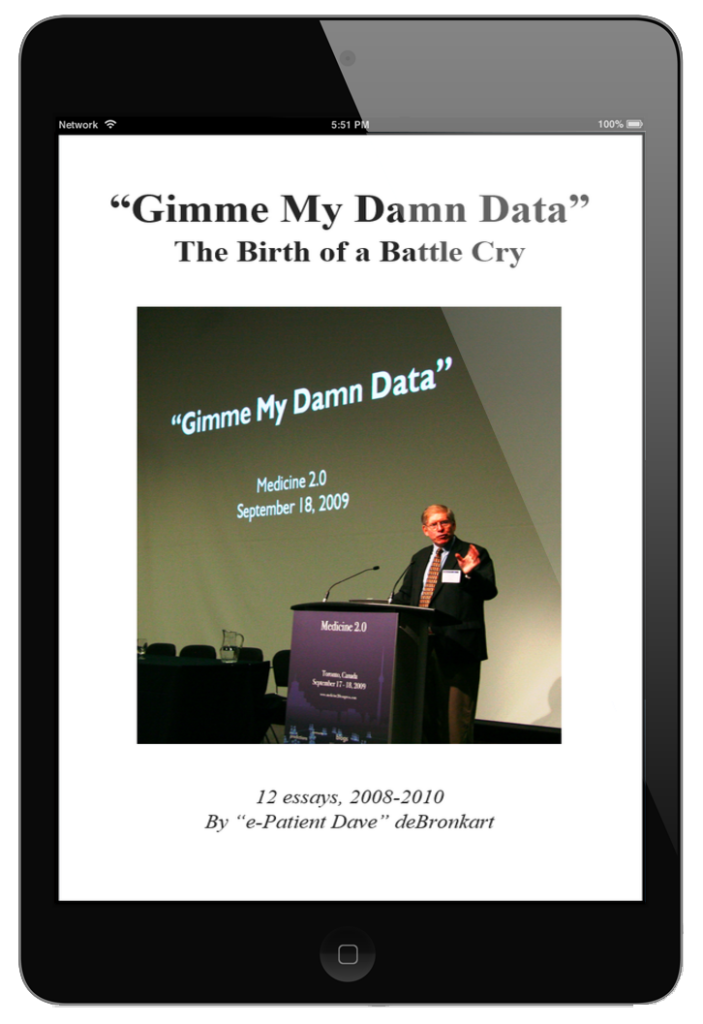It’s been twelve years(!) since my first healthcare keynote speech, September 2009, at Gunther Eysenbach’s “Medicine 2.0” conference in Toronto, which was the genesis of the battle cry “Gimme my damn data!” Reflecting on how that all started – it was just a series of blog posts expressing curiosity about how to improve healthcare – I decided to publish them at no charge as a compilation e-book, for convenient reference. The book’s page is here.
Amazingly, it’s been an eighth of a century (! 12½ years) since my ill-fated attempt to move my hospital’s data into Google Health in March 2009. It was such a disaster that it actually got featured on the Information Quality Trainwrecks blog. (Who knew such a thing existed?? Much less that my hospital data would become a feature?? Yikes. And I was just a guy trying to improve healthcare by being involved in his own records.)
I want to double emphasize the following, which is on the book’s page but worth repeating here, because it’s a major reason to understand this issue and this movement:
Importantly, the book shows that the motivation for my journey was for patients to be able to take responsibility for their health and (when necessary) their care. And that in turn was motivated by the realization that the US health system, while it’s full of brilliant people, as a system is a gigantic Gordian knot of financial incentives that keep it fixated on its own interests, not yours, and not your doctors’ and nurses’ interests either. The system has a life of its own, which gets in everyone’s way.
A full decade later those forces have played out with predictable results: the industry is far more expensive than it was then, patient satisfaction has not improved, nor have patient outcomes. The system itself – not the workers in it – is a problem that impedes good care.
The remedy, I continue to believe, is to build a new ecosystem of health tools enabled by access to our data. I hope this book will convey the roots of this motivation, how vehemently parts of the system have objected, and the value and importance of patients’ access to their medical information.



Leave a Reply